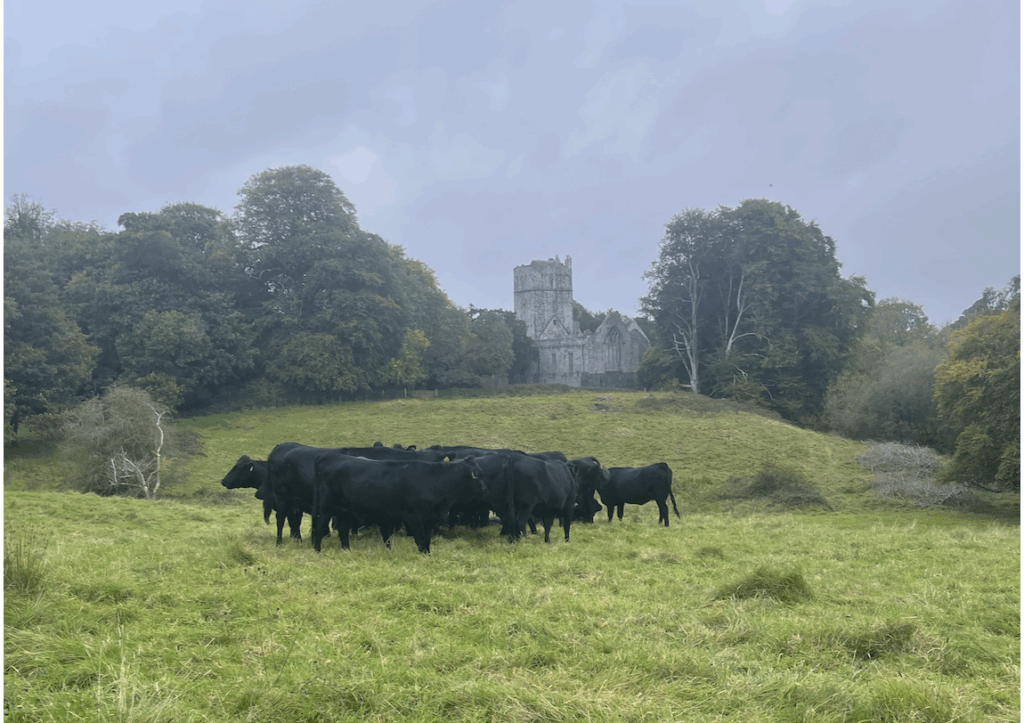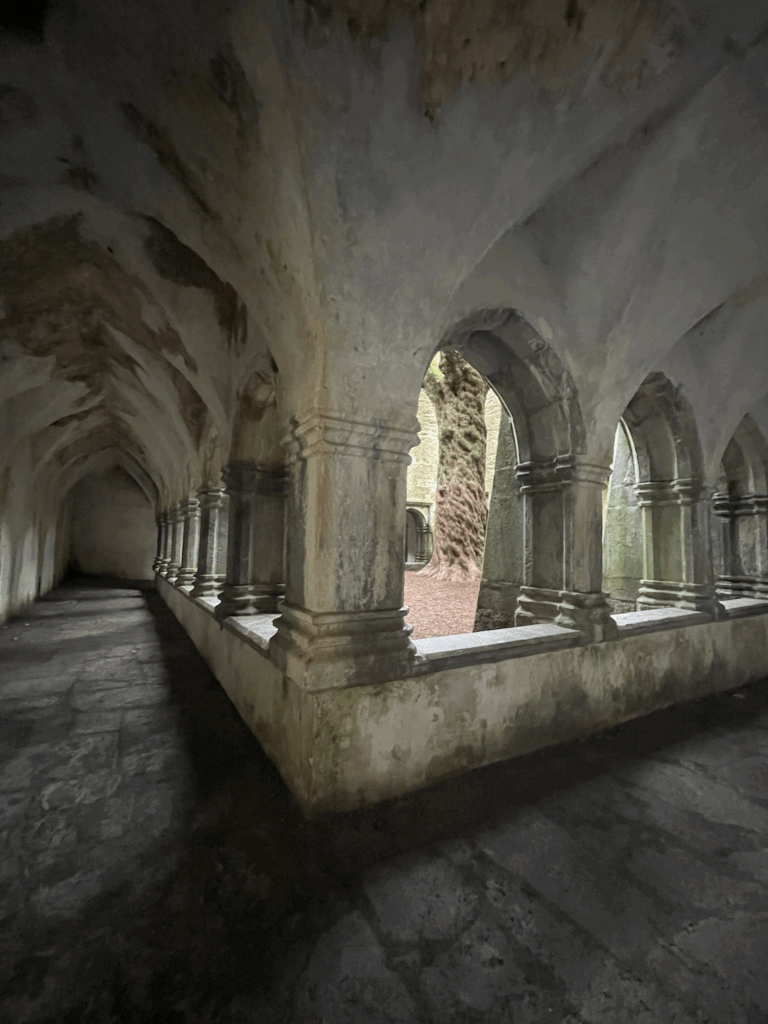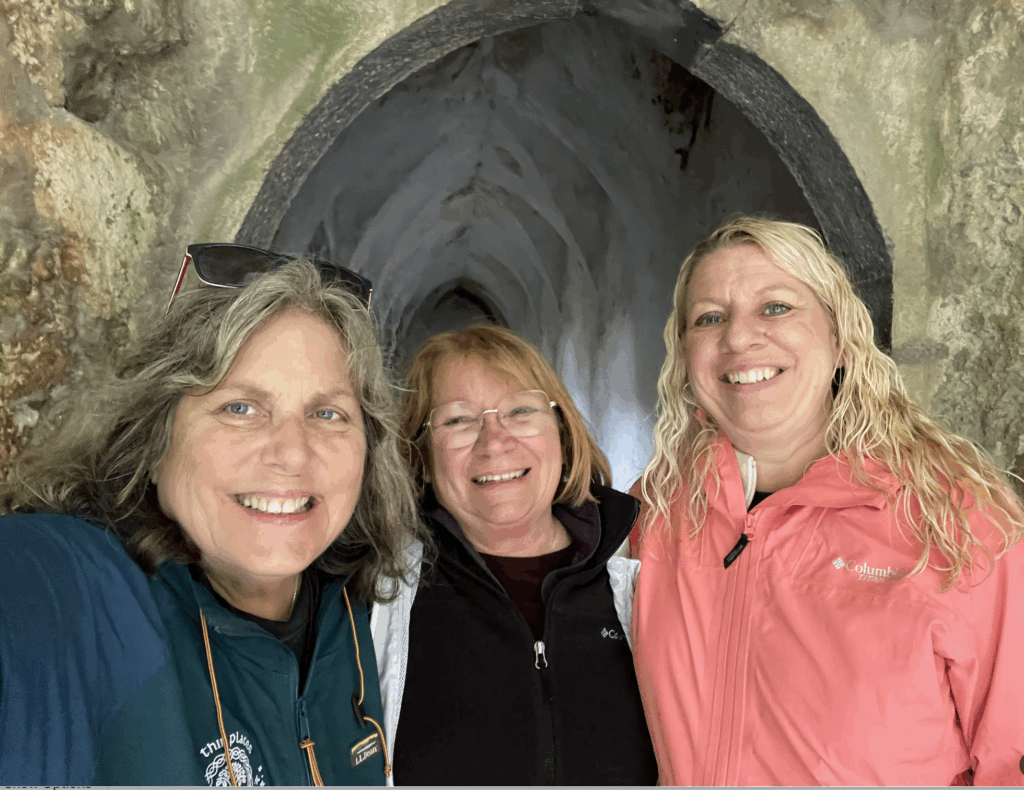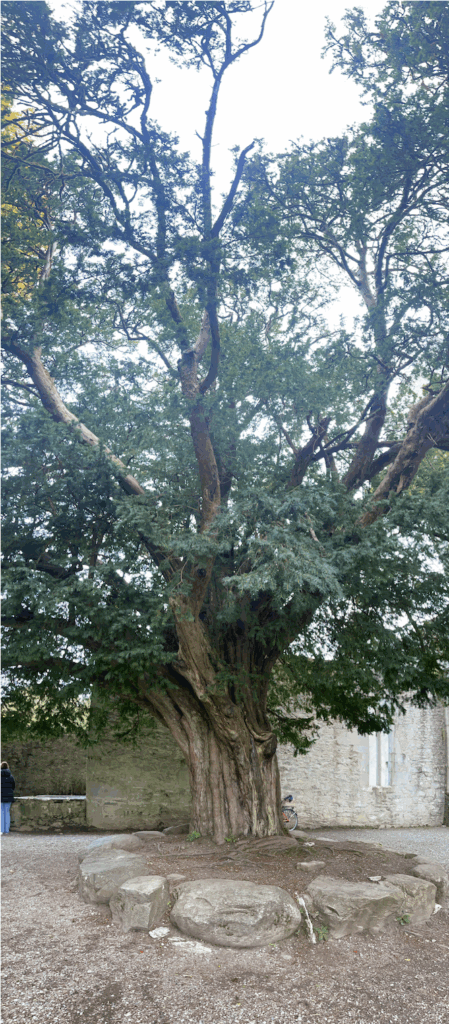
Muckross Abbey is a Thin Place
Muckross Abbey is one of Ireland’s most evocative monastic ruins — a hauntingly beautiful Franciscan friary tucked into a wooded grove in Killarney National Park, County Kerry. Its blend of serene spirituality and weathered stone magnifies its “thinness” of place.
Founded: Around 1448 by Donal McCarthy Mor, a local chieftain of the McCarthy dynasty of Desmond. It was established for the Observantine Franciscans, a reformed branch of the Franciscans known for strict poverty and simplicity.

The above image is taken from the fully restored Cloister Walk that winds around the Cloister Garth (the grassy area in the center. In Medieval times, when monks occupied the cloister, this square walkway would have marked a border around the center of the complex. From this walk, there would be access to the dormitories, refectory, the Chapter House (meeting room), and possibly the church. It was also known to be a place where monks could walk in silent prayer – circling clockwise in the old, ancient tradition.

The Cloister Garth, where this majestic yew now stands, may have contained gardens that grew herbs and vegetables. The garths were often places of spiritual reflection for monks, sometimes places where they could relax, do laundry, and, depending on their Order, communicate with each other.
The Muckross Yew Tree
The great yew tree that grows in the cloister courtyard is at the heart of the abbey’s mystery. Legend says the friars planted it when the abbey was founded — but others believe it was already there, and the abbey was deliberately built around it, honoring the tree as a sacred symbol of eternal life. This puts the Yew tree at an age in excess of 600 years old.
Yews were considered sacred for thousands of years in pre-Christian Ireland. Because they duplicate their trunks during the growth process, they can live hundreds – some say thousands – of years. In ancient times yew trees were believed to live in both the present world and in the eternal world. Yew branches were often placed in coffins before burial to help the soul across to paradise.
Our Lady of the Angels – Mirros Saint Francis
The abbey was dedicated to Our Lady of the Angels, echoing the name given to the small chapel near Assisi where St. Francis founded his order, prayed, and received his vision of heaven. He also died there. According to tradition, the chapel was given the name – a tribute to the Virgin Mary – because angels could often beheard singing around the chapel.
From the moment of first glance across the fields the Abbey exudes spirit – its own spirit. And that rare energy is also felt inside the walls, along the cloister, and among the many old trees in its graveyard. It’s a happy place, and our guests love going there.

The Poet’s Abbey
Muckross Abbey is sometimes called the “Poet’s Abbey”, as it is the resting place of three of Ireland’s greatest Gaelic poets representing the last flowering of the Gaelic literary tradition in Munster before the decline of the old Gaelic order:
Aodhagán Ó Rathaille (Egan O’Rahilly)
Geoffrey O’Donoghue of Glenflesk
Owen Rua O’Sullivan (Eoghan Rua Ó Súilleabháin)
“Under the Yew at Muckross”
Beneath the yew where shadows sleep,
The wind walks slow, the waters weep.
Stone ribs rise where the friars prayed,
And moonlight spills where vows were made.
Their voices drift through roofless air,
Soft echoes of a world laid bare.
A bell long broken calls no more,
Yet peace still hums through every door.
The poets dream in earthen beds,
Their verses whisper to the dead.
Each word, a leaf upon the floor,
That trembles where the roots run sore.
Time bends but never quite forgets
The cloister’s calm, the rain’s duets.
The holy tree still drinks their names,
Its heart aflame with unseen flames.
O Muckross, ruined, yet alive—
In every stone, the saints survive.
Their prayers, like mist from Lough Leane’s shore,
Rise up, and fall, and rise once more.
Blessings to all.


Leave a Reply